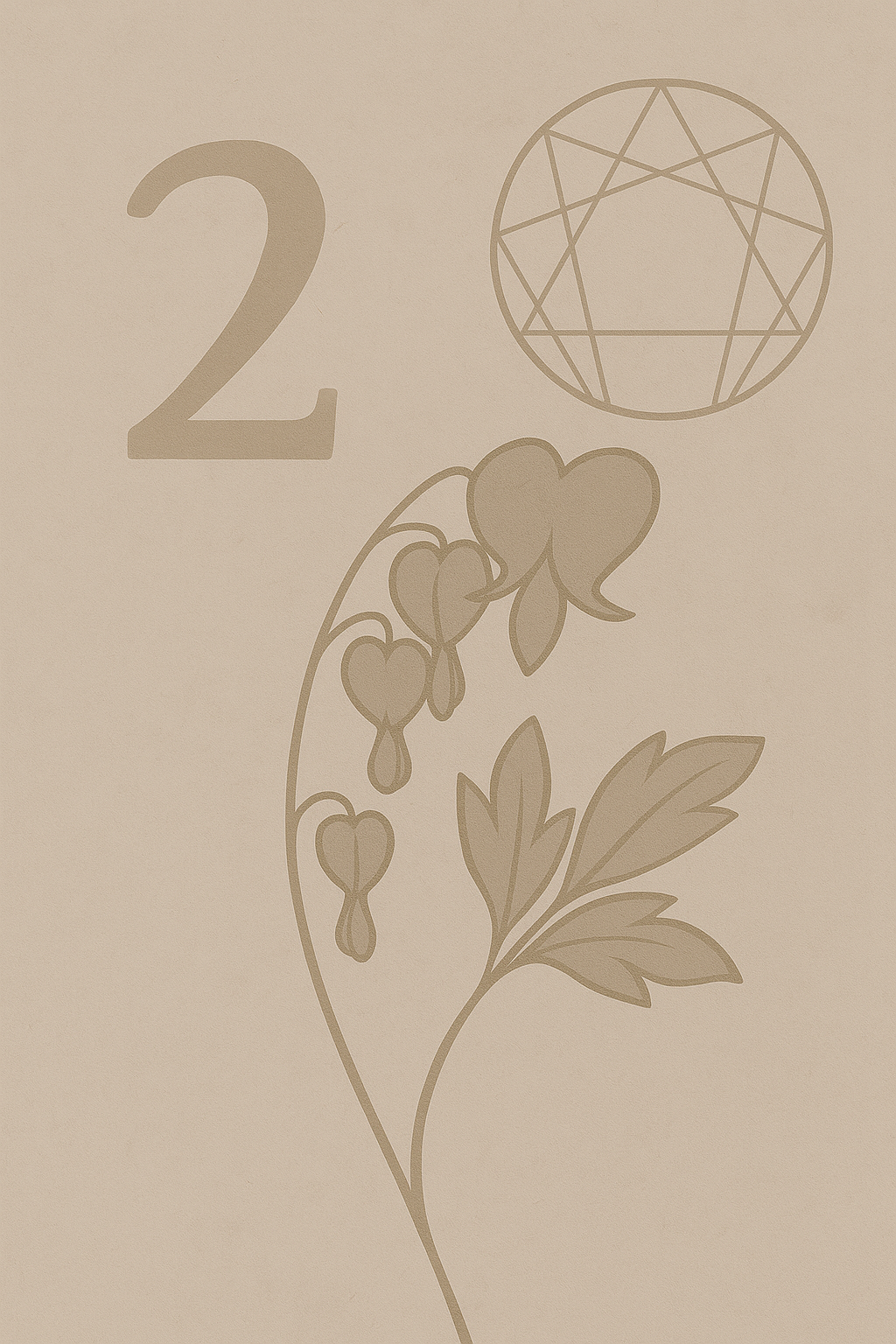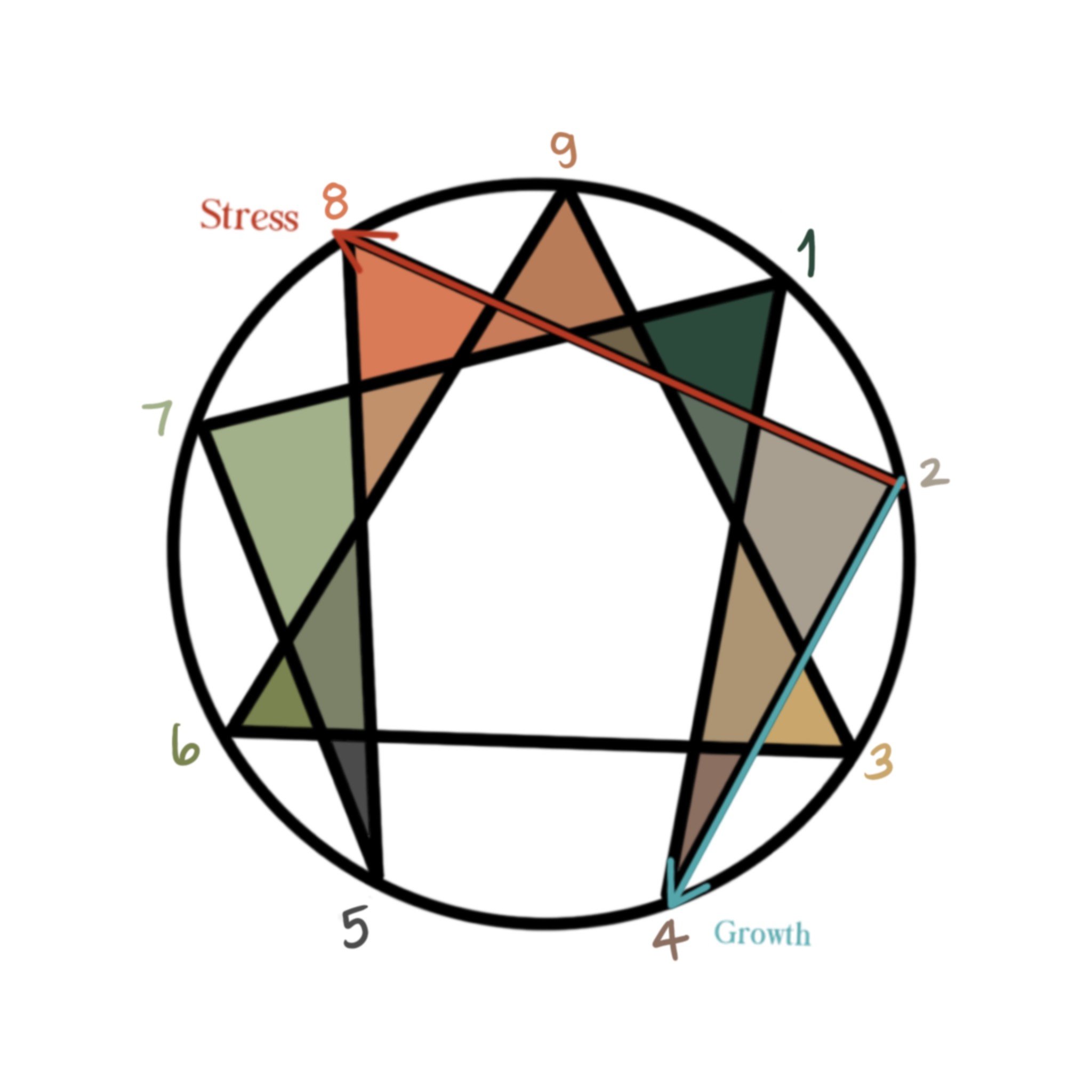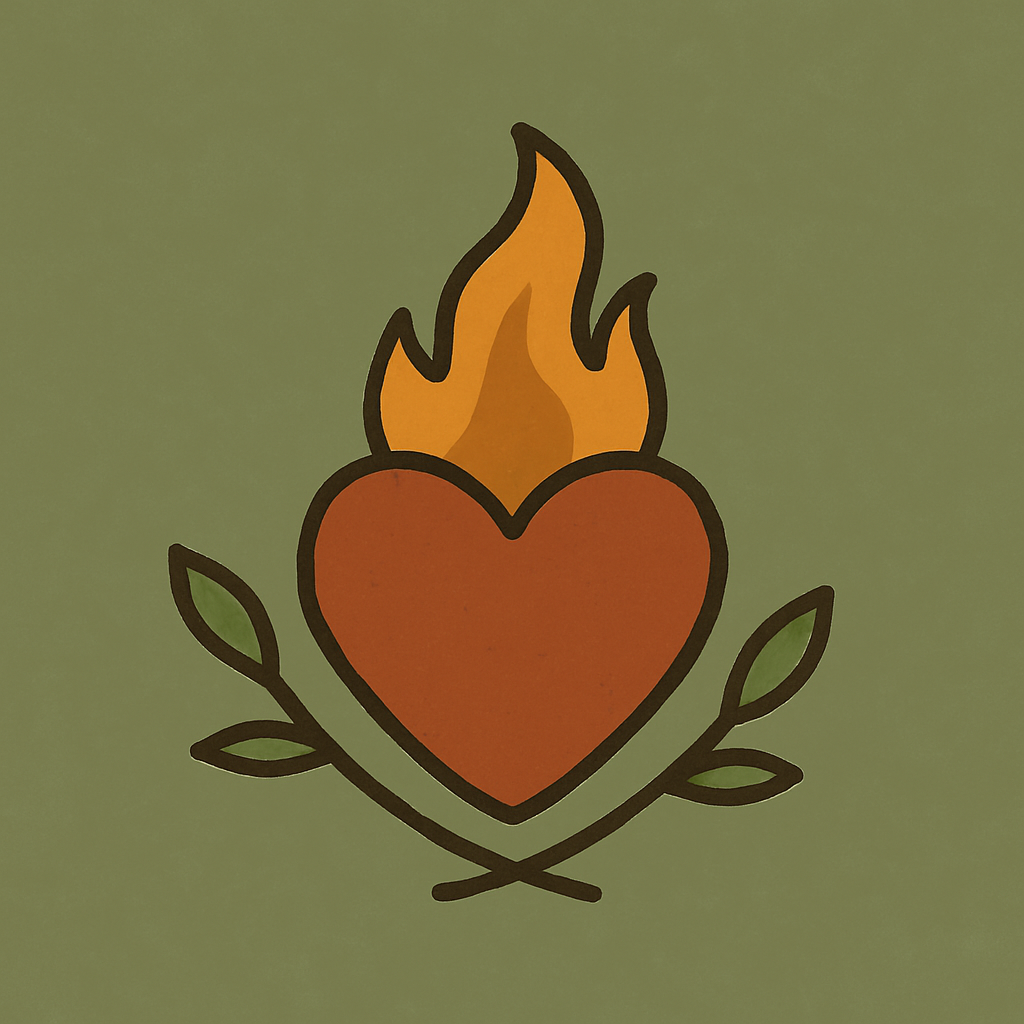Introduction
If Enneagram Types were love languages, Type Twos would be the love language, whichever one suits another person the most. These are the warm-hearted, soft-energy folks who somehow always know exactly what you need often before you do. Whether it’s remembering your birthday and your dog’s birthday, or dropping off a casserole before you even realize you’re sick, Twos are the helpers, the huggers, the humans who make you feel wanted. The ones who hug even when you tell them over and over you are not a hugger. It is their mission to convey how they feel about other and make them feel seen and loved, toss in there a lowkey need to be indispensable, and you’ve got 2s in a nutshell. Twos are keenly adept at knowing where they are needed, and would award themselves a blue ribbon in caring for others. They can often come across as “sickly sweet” (think classic southern mama energy).
But underneath all that sparkle is a quiet question: “Am I loved if I’m not giving?” That’s where the work is. Type Twos shine brightest when they learn how to turn their love inward too, and realize that being wanted doesn’t mean constantly being needed. Two’s desire to be wanted, loved, and needed can often burn them out, always wondering, “why don’t people love me the way I love them?” This is where resentment can brew and lead to some not-so-loving behaviors.
Because they pride themselves in feeling so deeply for others, they often struggle to recognize the ways in which they may come off as “holier than thou” by pretending they are above having needs of their own. They get themselves in trouble here by always having so much to give, others tend to think “if they have all this time and energy to do for me (and everyone else) they must be doing just fine,” Because the average person doesn’t give and give and give some more when they are drowning! That is typically reserved for when they have all their ducks in a row. This makes a 2’s giving very misleading.
1. Center of Intelligence: The Heart (Types 2, 3, 4) = Shame
[The Enneagram divides the nine types into three Centers of Intelligence: the Head, Heart, and Gut. Each center processes the world primarily through either thinking, feeling, or instinct.]
Heart types filter the world through emotion, relationships, and image. They take in the world through their feelings and focus on how others are responding to them, seeking affirmation, connection, or identity through those emotional cues. They’re often highly attuned to interpersonal dynamics and can read a room nearly instantly.
The emotional struggle for this center is shame. A sense that they are not inherently worthy of love or belonging, and that they must earn it by being helpful (2), impressive (3), or unique (4).
If you’re a Type 2, 3, or 4, you likely spend a lot of time tuning into others’ feelings (and your own), navigating relationships, and wondering who you truly are beneath all the roles you play.
2. Core Motivation, Fear, and Desire
[These are the inner drivers behind the type’s behavior: the deep needs they’re trying to meet, the fears they avoid, and what they long for most.]
Key Motivation: To be loved and appreciated. To feel special by being needed. To be emotionally connected, seen, and affirmed. To vindicate claims about themselves.
Core Fear: Being unwanted or unworthy of love. Losing connection and affection.
Core Desire: To feel loved and needed, and to have their love reciprocated.
Twos are deeply relational. Love isn’t just a feeling, it’s an active exchange, and they want to be in the middle of it, thriving on emotional resonance and mutual care. The challenge? That pesky tendency to suppress their own needs for the sake of being "indispensable" to others.
3. Wings:
[Your “wings” are the two numbers on either side of your core type. Most people lean more toward one or the other, which flavors their personality.]
1 Wing (The Servant):
More principled and dutiful, this Two leans toward moral responsibility and service. May look a little more restrained, with a helper role rooted in ethics or ideals.
3 Wing (The Host/Hostess):
Sparkly, charming, and goal-oriented. These Twos know how to work a room, often blending helpfulness with social magnetism. Image-conscious and achievement-aware.
Each wing shifts the expression of Type Two energy, either toward a quiet, dutiful kind of service or a more attention-grabbing, polished charisma.
4. Relational Stance: Dependent
[Each Enneagram type belongs to one of three stances: strategies for how we move through the world and try to get our needs met. These stances describe habitual energy patterns not just how you interact with others, but how you cope with stress, seek connection, and protect your sense of self.]
Stance: Dependent along with Types 1 and 6. This means they orient themselves in relation to others when navigating decisions and the world. They tend to check: “How will this affect my people?” before “What do I want?”
Repressed Center: Productive Thinking
Being in the Dependent stance also means Twos often repress the Thinking center. They don’t lack thoughts, but they tend to bypass clear thinking (especially about themselves) in favor of doing or feeling. Twos, like all the Dependent stance types (1 and 6) are external processors, meaning they need to speak their thoughts and feelings out into the world to make better sense of them.
So, while they might excel at strategizing about how to help you, they often neglect practical thinking around their own needs. When their energy is high, it works! When they’re drained, they may spiral, overextend, or shame themselves for being “too much” or “not enough.”
5. The Passion / Sin: Pride
[This is the emotional habit or "core vice" of the type: the thing they fall into when they’re out of alignment with their true self.]
Now let’s talk about Pride. And not the good kind where you’re proud of your dog’s graduation from obedience school. This kind of pride is sneakier. It’s the internal script that says, “I don’t have needs. I’m here to meet yours.”
Twos often don’t see their giving as prideful, but underneath their generosity, there can be a subconscious belief that others should respond with exceeding love, loyalty, or appreciation. And if they don’t? That can sting. The work here is learning to give freely, without expectation and to receive just as openly. This pride can also equate to taking even the most constructive of criticism very poorly.
6. Childhood Patterns
[This section highlights the unconscious messages each type internalized in childhood, both the false beliefs they absorbed and the healing truths they missed but longed to hear.]
Unconscious Message: “It’s not okay to have your own needs.”
Lost Childhood Message: “You are wanted.”
Many Twos grew up learning (explicitly or implicitly) that love is earned through helpfulness. They were often praised for being “so sweet,” “so thoughtful,” or “so mature,” especially when they cared for others. But behind the praise was often a lack of space for their own emotions and needs.
Over time, this can create a deeply embedded belief: If I’m not useful, I’m not lovable. Twos may become hyper-attuned to the emotional tone of a room, scanning for ways to insert themselves as indispensable. Healing begins when they realize: You were never loved just for what you did. You were always worthy of love for who you are.
7. Growth and Stress Arrows
In Growth (Toward Type 4): Twos soften into their own emotional world. They become more self-aware, more honest about their needs, and more comfortable feeling without fixing.
In Stress (Toward Type 8): The mask slips. Suddenly, the sweet helper becomes a little bossy (okay, a lot bossy), protective, and even aggressive. This shift often comes from deep hurt or feeling unseen.
[The Enneagram symbol includes dynamic lines that show where each type tends to go under stress and where they go when growing.
When stressed, a type may take on the less healthy traits of another number. In growth, they may adopt the healthier aspects of yet another. Understanding these arrows helps with intentional development.]
Both arrows offer incredible insight: When a Two accesses their inner Four, they allow space for self-expression. When they hit Eight territory, it’s a red flag that boundaries or needs have been ignored for too long.
8. Superpower
[Every Enneagram type brings a specific gift to the world, a unique strength that flows when they’re aligned and healthy. This isn’t just what they’re good at, it’s what makes them a necessary part of a thriving, balanced world.]
Relational Intuition & Emotional Warmth
Twos have an uncanny ability to read emotional energy. Whether it’s a friend’s subtle mood shift or a stranger’s discomfort in a room. They feel people deeply and often know just what to say or do to make someone feel safe, seen, or supported. When they’re grounded and clear about their boundaries, this becomes a powerful healing force in relationships, therapy, parenting, and leadership.
9. Common Challenges
[This section explores what tends to trip this type up: recurring emotional patterns, blind spots, and areas of struggle. These aren’t flaws, but rather predictable pitfalls that can become opportunities for growth with awareness and support.]
Neglecting Their Own Needs: Twos often struggle to even know what they need, let alone ask for it. Prioritizing others becomes so automatic that self-awareness gets crowded out.
Overextending Themselves: There’s a drive to be everything to everyone, which leads to burnout, resentment, and passive-aggressive behavior when they don’t feel appreciated.
People-Pleasing: Twos often struggle to say no, fearing that boundaries = rejection. They may default to flattery or self-sacrifice to avoid conflict or disconnection.
Emotional Enmeshment: They can merge with others emotionally, losing their sense of self in relationships or taking on others’ feelings as their own.
Difficulty Setting Boundaries: Saying "no" can feel selfish or mean to a Two. They often stretch themselves thin to keep everyone happy, fearing they’ll lose connection if they draw a line. Learning to set limits without guilt is often the hardest (and most freeing) part of their growth.
10. Subtypes
[This refers to your dominant instinct, self-preservation, social, or one-to-one (also called sexual) which shapes how your Enneagram type shows up in daily life. Each type can look quite different from each other. Each Enneagram type has an instinctual subtype that is often called the “countertype.” This version runs counter to the usual stereotype of the type, meaning it may express its core motivation in a less obvious or even contradictory way. Countertypes can make it harder to spot your number at first because they don’t always “look like” the textbook version, but the underlying motivation is still the same.]
Self-Preservation (The Nest): The warm homebody. This Two gives quietly through acts of service, loyalty, and physical care. Tends to deny their own exhaustion or burnout.
(Countertype)
Social (The Hive): The “group mom” or community glue. Social Twos want to be beloved by the collective and often play the connector role, remembering everyone’s details and showing up everywhere.
One-to-One / Sexual (The Flame + Heart): Intensely focused on deep, intimate bonds. This Two craves emotional fusion and can feel rejected easily. Seductive, emotionally charged, and magnetic.
11. Emotional, Energy, and Communication Style
[This section explores what tends to trip this type up: recurring emotional patterns, blind spots, and areas of struggle. These aren’t flaws, but rather predictable pitfalls that can become opportunities for growth with awareness and support.]
Emotional Style: Warm, attuned, expressive. Feels deeply, especially when others are hurting. May suppress or bypass their own negative emotions to “stay positive” or helpful.
Energy: Engaging, affectionate, and connective., outward-oriented, enthusiastic, physical affection, or emotional generosity.
Communication Style: Empathic and people-focused. Twos often mirror others’ emotions, use validating language, and insert themselves gently but persistently into others’ emotional worlds. May struggle with directness when asking for what they want.
12. Therapy Perspective
[Practical notes from a therapist’s point of view. What this type might need in counseling and what healing often looks like. This is where you’ll find tips, reminders, and patterns that tend to emerge when this type is doing inner work.]
In the therapy room, Twos often come in for burnout, resentment, or relationship confusion. They may struggle to name their own desires, downplay their pain, or feel like they’re “too much” for needing anything. In my experience as a therapist, many Twos don’t linger long in therapy. They often show up, vent about a situation, take in a bit of feedback on their overgiving or resentment, and then head back out into the world—usually feeling lighter just for having talked it out.
Sometimes, they come in frustrated with a partner, family member, or friend, only to realize, mid-session, that they don’t actually feel as angry or wounded as they initially claimed. Twos are natural external processors, and it’s not uncommon for them to unconsciously exaggerate their own “victim status” in the heat of the moment. Not for attention or manipulation, but because they’re so deeply wrapped up in relational dynamics that it can be hard to tell where their feelings end and someone else’s begin.
For Twos, therapy works best when it creates space for honest reflection after the emotional fog has cleared. When they’re not just reacting, but actually reconnecting with their own voice, their own wants, and their own truth.
Another pattern? Charm. Twos often lean into their warmth and likability in session. They’re relational pros, and many instinctively test boundaries with their therapist, not maliciously, but because it’s how they’ve learned to connect. They might flatter, overshare, or blur the line between client and friend, often seeking emotional reciprocity or affirmation. Holding steady, kind boundaries can be deeply healing, especially when those boundaries say, “You don’t have to earn your place here.”
What helps:
Gentle encouragement to focus inward
Space to untangle obligation from genuine desire
Naming resentment without shame
Practicing receiving (compliments, care, rest)
Twos tend to thrive when a therapist mirrors their value apart from their usefulness.
13. Pop Culture Examples (hypothetical)
[Real and fictional people who are widely considered to represent this Enneagram type. These examples help ground abstract concepts in relatable characters and show how the type can manifest in very different lives.]




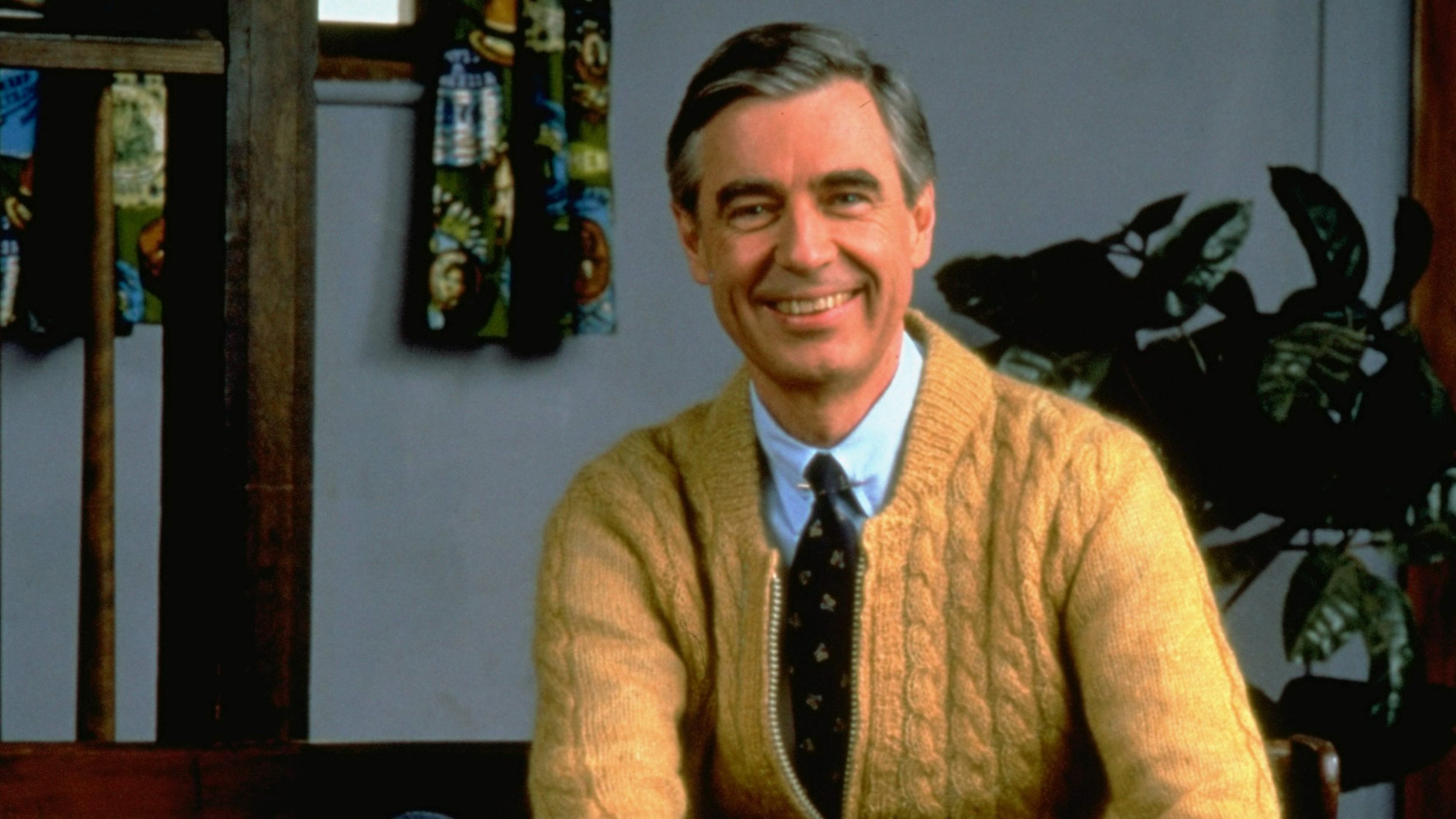



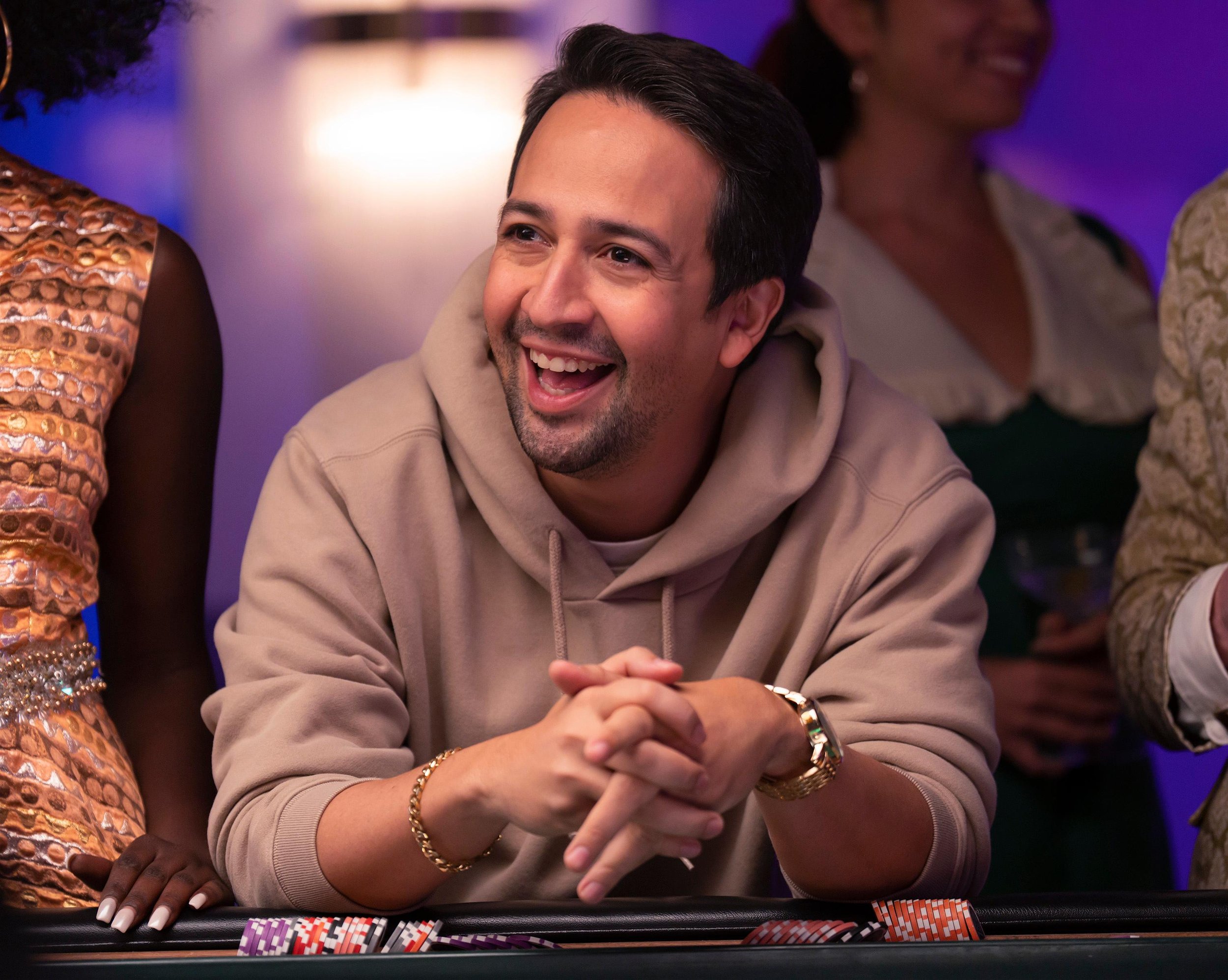

Real People
Dolly Parton – Warm, generous, and deeply others-focused
Jennifer Garner – Known for her warm, mom-friend energy, she radiates sincerity, service, and social charm, often supporting others both on-screen and off.
Fred Rogers (Mister Rogers) – Deeply attuned to the emotional needs of children and adults alike. His entire ethos was about kindness, empathy, and helping others feel seen
Princess Diana – Known as the “People’s Princess,” she was beloved for her emotional warmth, charity work, and desire to connect with people on a human level, often to her own detriment
Lin-Manuel Miranda – Energetic, heart-centered, and constantly lifting others up in interviews, projects, and collaborations. His enthusiasm is often directed toward empowering communities and telling their stories.
Fictional Characters
Molly Weasley (Harry Potter) – Maternal, fiercely loving, always feeding someone or defending them like a lioness. (“Not my daughter, you b—!” anyone?)
Charlotte York (Sex and the City) – Sweet, helpful, deeply motivated by love and being loved in return. Often sacrifices her own needs to create emotional connection
Samwise Gamgee (LOTR) – Loyal to a fault, full of love and casseroles
Leslie Knope (Parks & Rec) – A Two with a Three wing and a color-coded binder of love
Anna (Frozen) – Always trying to reconnect and repair, even when Elsa pushes her away. Anna’s love language is basically chasing people through blizzards to remind them they’re not alone.
Path to Growth: So, Now What?
What Growth Means for Type 2
Growth for Twos isn’t about giving more, but about owning their own worth, needs, and emotions rather than defining themselves primarily through how helpful or needed they are. It means stepping out of the people-pleasing and pride that hides beneath generosity, into a more genuine way of being that includes caring for themselves as well as others.
Early Signs of Growth
Recognizing and admitting personal needs instead of always prioritizing others.
Letting others help and truly receiving support (not just giving).
Noticing when emotional undercurrents like resentment or frustration are bubbling up, instead of denying or suppressing them.
Slowing down in relationships to check in: do you really want to help, or are you doing it so you’ll be loved/needed?
Setting and communicating boundaries, even small ones, without guilt.
Practices that Support Growth
Journaling or reflection: track when you feel unappreciated, used, or overextended. Ask: What was I expecting? What need was I afraid to voice?
Self-compassion practices: affirming that your worth isn’t conditional on how much you do for others.
Therapy or group sharing that encourages exploring shame or fear of being unworthy, and discovering how those shape your helping patterns.
Learning to say “no” and practicing doing so gently but firmly.
Mindfulness/emotional awareness work: noticing your own feelings (anger, sadness, desire) and letting yourself have them (not only being attuned to others’).
Slowing relational speed: before you jump in to solve or help, pause and ask, “Is this what they want?” or “Is this what I want/need right now?”
What Mature Growth Looks Like
A Two who gives out of genuine love and choice, not out of compulsion, guilt, or a belief that they need to earn love.
Emotional honesty: they are able to express their desires, limits, disappointments, and boundaries openly, and in healthy ways.
Balanced reciprocity: they can both give and receive; relationships aren’t one‐sided.
A stable sense of self-worth that isn’t dependent solely on being needed or helpful. They can rest in themselves, not only in their usefulness.
Presence with others that’s not fixated on fixing; being with others simply for connection, compassion, and shared humanity.
A capacity to hold others’ needs AND their own without collapsing or denying either.
Watch Out For…
“False growth” traps: acting self-nurturing in ways that still deny deeper needs; giving but with unspoken expectations of approval or gratitude.
Overcorrecting by withdrawing from helpfulness altogether or becoming overly independent in a way that cuts off relational connection.
Using “helping” or “giving” as a way to avoid vulnerability, discomfort, or confronting inner shame.
Letting resentment build when boundaries aren’t honored, then expressing it in passive-aggressive ways.
Falling back into identity of “helper” as a defense; losing touch with authentic self in the name of being needed.
Encouragement for the Journey
Remember: growth is less about reaching a perfect endpoint and more about becoming more real, more whole. It’s courageous to name your needs, to lean into discomfort, and to allow others to carry some of the weight. Each time you do, you strengthen your knowing that you are valuable beyond what you give. Little acts of saying “this is too much,” or “I need rest,” or “I feel hurt”, they matter. They’re not signs of weakness. They’re the ground where your authentic self can flourish, and relationships can deepen in ways you might not have imagined.
Bonus! The Quinessential Type Two Playlist
I scoured the internet, fan forums, and my own late-night feels to curate songs that capture the emotional world of a true Type Two. Whether you're deep in your feels, hyping yourself up, or trying to figure yourself out, this playlist is for you.
14. Journal Prompts
[Reflective questions tailored to this type’s inner world for self-awareness, growth, and emotional clarity. Designed to help readers get curious about their patterns, relationships, and deeper motivations.]
What do I want if no one else is involved or impacted?
When do I feel most loved without having to earn it?
What am I afraid will happen if I stop helping?
Where do I feel resentment and what boundary might that be pointing to?
15. Final Encouragement
Dear Two, You are not loved for what you give. You are loved for who you are.
Your tenderness, loyalty, and fierce love for others are real gifts, but you don’t have to use them to earn your place. The more you chase love by being indispensable, the more it slips into something transactional. That’s your pride talking, not the loud, boastful kind, but the quiet, persistent kind that whispers, “I’ll be okay as long as everyone needs me.”
Pride for a Two often looks like pretending you don’t have needs. Like giving in a way that looks selfless but carries strings attached. Like getting angry when someone doesn’t read your mind or return your care the way you expected. You’re not bad for doing this but you are invited to notice it. That’s where real transformation begins.
Let yourself be cared for. Let someone bring you soup. Practice receiving affection, help, and kindness, even when it feels uncomfortable or undeserved. That’s the muscle that needs strengthening.
And when your emotions start to swell, pause. Don’t send the text yet. Don’t launch into the dramatic monologue. Sit with it. Journal it. Bring it to your therapist. Your words hold weight, and once they’re out, they can’t be unsaid. Twos are emotionally gifted, but that gift can burn bridges if used reactively. Give yourself time to discern what’s true beneath the initial sting.
Most of all, ask yourself gently:
Is this love I’m offering... actually a bid for control?
Is my sweetness a strategy?
Am I being honest, or just trying to stay needed?
This isn’t about shaming your love, it’s about purifying it.
Because when your love flows freely, without hooks or hidden expectations?
It is unstoppable.
And so are you.
Type 2 Mantra
Say this when you’re tempted to over-give or lose yourself in someone else’s needs.
